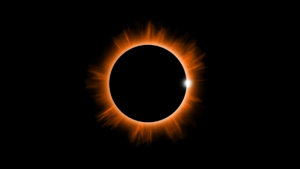You may have heard the term “glaucoma” before, but what is it really, and how do you know if you have it? Glaucoma is an eye disease in which the optic nerve is damaged over time due to elevated pressure in the eye, resulting in vision loss. There are not many noticeable symptoms, so regular eye exams are the only way to identify if you have elevated eye pressure and to prevent blindness from glaucoma. Early detection is key, so getting a yearly comprehensive eye exam is your best bet in preventing vision loss!
Causes and Risk Factors:
The main risk factor for glaucoma is elevated pressure within the eye. This is an imbalance between the rate at which the aqueous humor, the clear fluid filling the space in the front of the eyeball between the lens and the cornea, is produced and the rate it leaves the eye. Increased intraocular pressure over time causes damage to the optic nerve which connects the eye and the brain, causing irreversible vision loss.
There are several components and risk factors that doctors look into.
- Age: Can begin as early as 40 years old
- Race: African-Americans have a higher risk and are more likely to suffer permanent vision loss.
- Family History: If someone in your family has a history of glaucoma it increases your risk.
- Medical conditions: Diabetes and High Blood Pressure may increase your risk of developing glaucoma.
Diagnosis:
You might be wondering how to know if you are suffering from glaucoma. At your annual comprehensive eye exam, your doctor will check your eye pressure in a couple of different ways:
- Tonometer. After special numbing drops are put in your eye, your doctor gently holds this pencil-shaped device against the outside of your eyeball. The reading tells how well your cornea pushes back.
- “Puff of air.” Your doctor could also use an instrument that blows a small puff of air at your eye while you look into a light.
- Most people are familiar with the famous eye puff test. While it can still be used today as a screening method for checking eye pressure, it is slowly going by the wayside. Not only do patients dread the air puff, it is not as accurate as some of the newer methods of testing eye pressure or the gold standard tonometer.
- Icare. No drops required. Single-use tips are used for measurement, which gently touches your eye quicker than a blink.
All of these methods are painless and only take a few seconds to complete. Your results will be available right away and your doctor will explain what they mean and the next steps if treatment is necessary.
Treatments:
Luckily there are many treatments available to patients who are experiencing glaucoma. They range from drops to surgery depending on the need of the patient.
- Glaucoma medications are drops that can be used daily to decrease eye pressure by decreasing the amount of fluid made, increasing the outflow of fluid, or both.
- SLT surgery is the use of Laser energy applied to the drainage tissue in the eye. This starts a chemical and biological change in the tissue that results in better drainage of fluid through the drain and out of the eye. This eventually results in lowering of the intraocular pressure or IOP. . It may take 1-3 months for the results to appear.
- Minimally Invasive glaucoma surgery (MIGS) is a surgery using shunts that lower eye pressure.
These treatments may be combined for maximum pressure lowering.
What Should You Do?
No one should be afraid of glaucoma, but they should also not ignore it. Annual eye exams are the key to watch for this silent condition
Early diagnosis and treatment of glaucoma is critical to ensure your vision remains healthy. The best thing to do to manage your eye health is to have an annual comprehensive eye exam. During your comprehensive eye exam you will be asked about your family history, medical conditions and have your eye pressure tested. If you are in need of an optometrist, click here to find a doctor near you!

Are Your Eyes Ready for the Upcoming Total Solar Eclipse?
A total solar eclipse¹ will cross the United States on April 4, 2024, passing over Texas, and traveling through Oklahoma, Arkansas, Missouri, Illinois, Kentucky, Indiana, Ohio,

The Time Has Come to Use Your Health Benefits!
Have you made good use of your health benefits this year? If not, consider using your Health Savings Accounts (HSA) or Flexible Spending Accounts (FSA)

Winter is Coming – So Are Dry Eyes
Brace yourselves, winter is coming and so are dry eyes! Winter weather conditions are one of the leading causes for dry eye symptoms. This is

Eye Safety and the Solar Eclipse
Did you know that there will be an annular solar eclipse happening on October 14, 2023? That’s right, and most of Colorado will be able

Time to Use Your Health Benefit Funds
The end of the year is fast approaching, and your health benefits are expiring! You might already be feeling anxiety for the upcoming holiday season,

Tips for Dry Eye Relief
Did you know that between 16 million and 49 million Americans have dry eyes? This is between 5-15% of the population!¹ Dry eye symptoms are